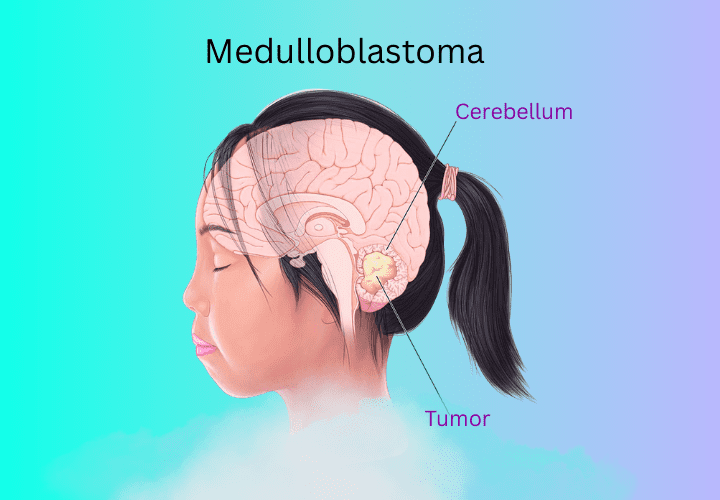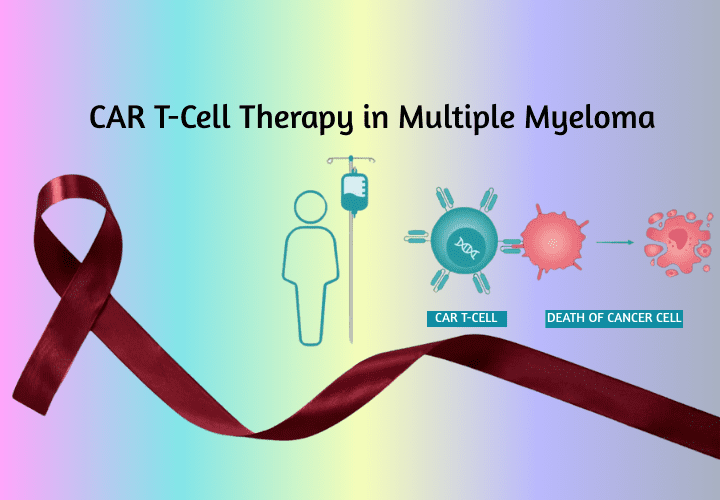Advances in Medulloblastoma Treatment for Children

Advances in Medulloblastoma Treatment for Children
- onco
- May 30, 2025
Medulloblastoma is a cancerous brain tumour that forms in the lower back of your brain, known as the cerebellum, which controls muscle coordination, balance and movement. Medulloblastoma quickly spreads to other parts of the brain and spinal cord through cerebrospinal fluid, which surrounds and protects the brain and spinal cord. Medulloblastoma is a rare cancer, but it is most common in children. The leading cancer hospital delhi – Oncoplus is adopting advanced treatment approaches to offer comprehensive care and quality treatments. In this article, you will explore the symptoms, causes, diagnostic methods, and the latest advances in pediatric medulloblastoma treatment.
Symptoms
The signs of medulloblastoma may vary due to several factors, such as the patient’s age, the size and location of the tumour, and whether the cancer has spread to other areas of the brain or spinal cord. The symptoms often arise due to the tumor’s location or from increased pressure inside the skull (intracranial pressure) caused by the tumor. If encountering these signs, then it could be due to medulloblastoma –
- Back pain
- Balance issues
- Changes in vision
- Problem in walking
- Dizziness
- Headaches
- Nausea and vomiting
- Tiredness
- Urinary or bowel incontinence
Causes
Medulloblastoma is a rare and fast-growing brain cancer that can occur at any age, but it is most commonly found in children, especially those under the age of 10. It is a genetic condition that occurs due to several changes to genes that are responsible for controlling the way cells function. Genes may be mutated or changed in cancer, which can lead to the growth and spread of these cancerous cells.
People with certain genetic conditions, such as Gorlin syndrome (nevoid basal cell carcinoma syndrome) and Li-Fraumeni syndrome, are likely at risk of developing medulloblastoma cancer. The cause of the medulloblastoma is not clear yet.
Tests and Diagnosis
Your healthcare provider will discuss your symptoms and may ask for a detailed medical history. If medulloblastoma is suspected, they will recommend the following tests to confirm the diagnosis and determine the tumour’s size, location, and characteristics.
- Neurological exam – As part of a neurological exam, your healthcare provider will assess your hearing, vision, coordination, and reflexes to identify the affected areas of the brain.
- Imaging tests – MRI (Magnetic Resonance Imaging) or CT (Computed Tomography) scans, visualise the brain in detail and identify the presence, size, and location of a tumour.
- Biopsy – A Tissue sample (biopsy) is collected and sent it to a pathologist for clear diagnosis.
- Spinal tap (lumbar puncture) – Surgeon collects a sample of cerebrospinal fluid (CSF) through a procedure called a lumbar puncture (spinal tap) to check for the presence of cancer cells. However, healthcare providers usually recommend this test only after the removal of the tumour or after managing intracranial pressure.
What are the latest advances in Medulloblastoma treatment?
Children who undergo the treatment are vulnerable to the late effects because their organs are in the developmental stage, and cancer treatment can interfere with the development. The advances in medulloblastoma treatment in Delhi reflect several key developments in the diagnosis, treatment, and understanding of the disease in recent years. The shift from traditional tissue-based diagnosis to molecular analysis is the key factor. Instead of only examining the tumour under a microscope, doctors now analyse molecules such as DNA, RNA, and proteins from tumour tissue or cerebrospinal fluid.
In molecular analysis, the tumours are now segregated into four subgroups, including WNT-activated medulloblastoma and other subgroups that have lower survival or are likely to recur. The neuro-oncologist offers a different treatment approach for each subgroup.
This help determine whether a patient requires less aggressive therapy to minimise long-term side effects or more intensive treatment for better disease control. Ultimately, the goal is to reduce treatment toxicity and its associated late effects. However, more advances are still to be made for all subtypes to improve the quality of life for the survivors.
Treatment Options for Medulloblastoma
Surgery is generally used to remove the tumours. Let’s get to know the different treatment approaches in detail –
Surgery to release fluid build-up in the brain – A medulloblastoma can grow large enough to block the normal flow of cerebrospinal fluid (CSF), leading to a dangerous condition called hydrocephalus, causing fluid build-up and pressure inside the skull. To reduce this pressure, a new pathway is created for the fluid to flow out of the brain. In some cases, this procedure is performed simultaneously with tumour removal surgery.
Surgery to remove the medulloblastoma – Surgery may not completely remove the tumour because it is located near critical structures deep within the brain. Even after the tumour is removed, additional treatments such as radiation therapy and/or chemotherapy are usually necessary to target any remaining cancer cells and reduce the risk of recurrence.
Radiation therapy – Radiation therapy includes high-energy beams, such as proton beams, to eliminate cancer cells. During treatment, a machine precisely targets the radiation to specific areas of the brain and spine where cancer cells may remain. Radiation is generally used after surgery to destroy the remaining tumour cells and reduce the risk of the cancer coming back.
Chemotherapy – The powerful medications are used in chemotherapy to kill the cancer cells. The drugs are given through an intravenous (IV) line or directly into a vein. It is generally used after surgery or radiation therapy, and in some cases, it may be given at the same time as radiation to enhance its effectiveness.
Conclusion
Medulloblastoma, though rare, is the most common malignant brain tumor in children and requires a timely, precise, and multidisciplinary approach for effective management. The introduction of molecular profiling has revolutionised how medulloblastoma is understood and treated. Patients seeking the latest advances in medulloblastoma treatment in Delhi can find expert care at Oncoplus. The advanced treatment approach aims to increase survival rates and minimise long-term side effects in growing children. Cancer Hospitals in Delhi are adopting these advanced approaches, making cutting-edge medulloblastoma care accessible within India.
Recent Posts
-
Advances in Medulloblastoma Treatment for Children
May 30, 2025
-
Can Testicular Cancer affect fertility?
April 23, 2025
-
Why are Breast Cancer Cases Increasing Around the World?
April 17, 2025



